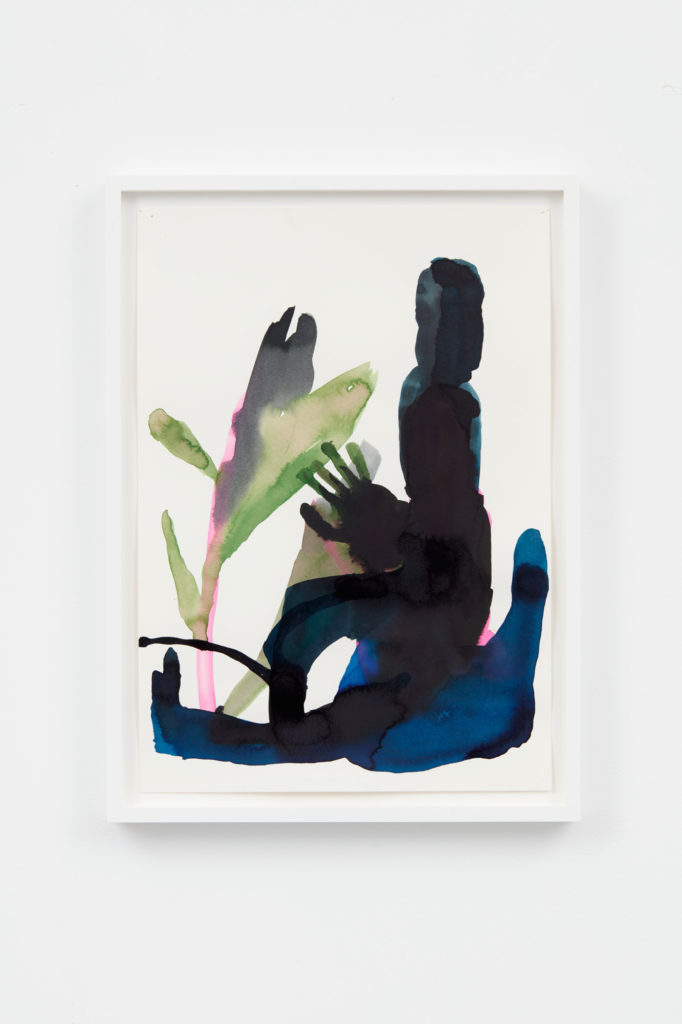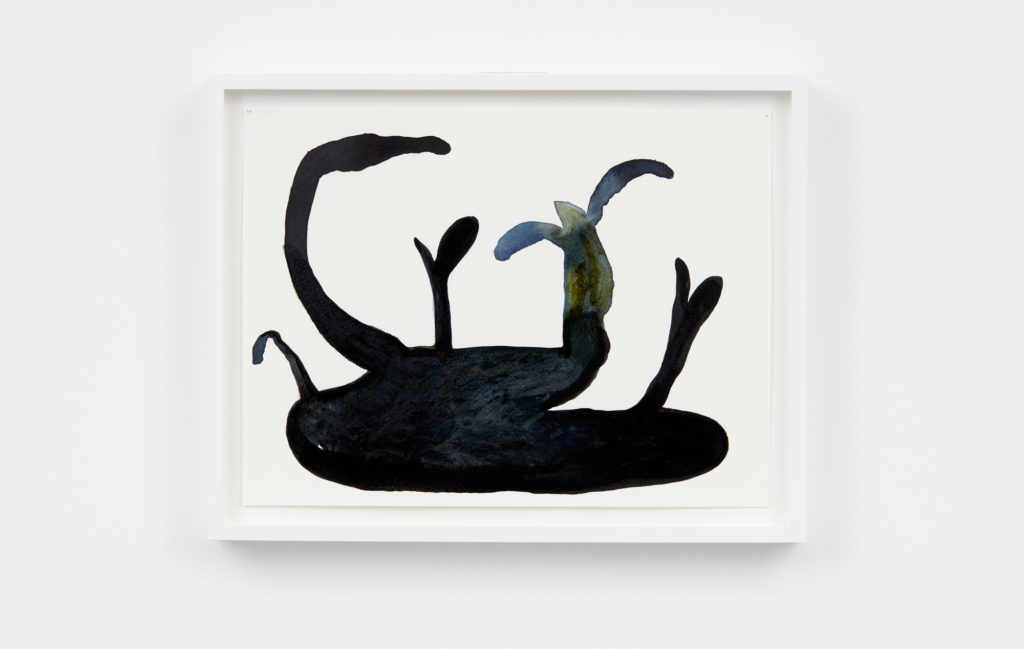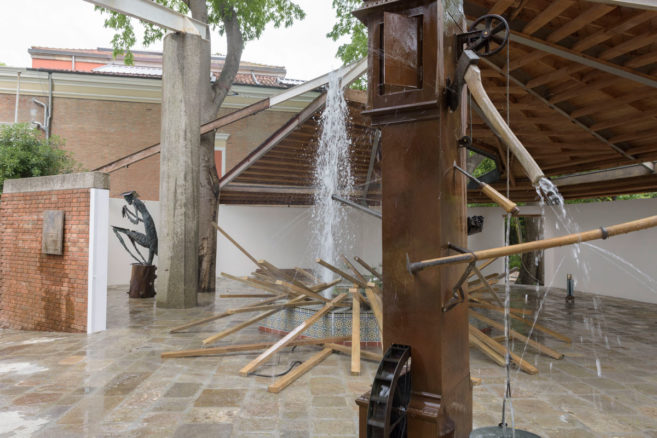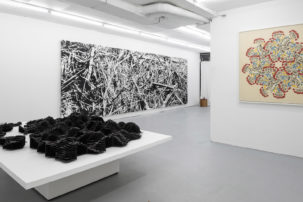“Mudpuddlers, Corn Borers, Polymorphic Platyforms” is Geoffrey Farmer’s only solo exhibition of 2018. Following an incredibly busy 2017, when he moved from Vancouver to Hawaii, mounted institutional exhibitions at Schinkel Pavillon (Berlin), Salzburger Kunstverein (Salzburg) and represented Canada at the 57th Venice Biennale, Farmer returns with an exhibition of 82 small drawings—the first of such to-date, although presaged by the drawings he did for his Venice monograph. Since Farmer is best known for his use of sculpture and film, in installations that can change over their duration (curator Jessica Morgan jokingly branded him an “enemy of the museum”), these drawings feel surprisingly fixed. Although a commercial presentation, the drawings may mark a transition; in the press release for the show, Farmer expresses a desire to slow down and resist the imperatives of “now.”
Accordingly, this exhibition has a sense of pacing and intention. The works are hung formally, with a wall of yellow, a wall of blue and a repeated long-limbed figure. The title references the natural world: mud-puddling, which is how butterflies suck nutrients from soil, and polymorphism, a formal characteristic of their wing patterns. There are loosely drawn images of butterflies, flowers, bugs, birds and plants. A set of texts distributed in two different piles, situated against two different gallery walls, plays companion to this large suite of drawings. Each text has an extended title that is numbered and linked to a drawing. The texts unravel the drawings’ formal similarities, intertwining fact, fiction and memory. Written in the first person, and varying in length from one-word explanations to full descriptions of dreams, encounters and events, the texts are a captivating rhetorical tool and bring us closer to the artist. Intermingled among the many titles are phrases borrowed from other authors, such as Kissed over Close, Wears yet a Crimson Speck and Lying Asleep Between the Strokes of Night from poet Algernon Charles Swinburne’s writing on sado-masochism; No Lip Has Touched It Since His and Mine, in Turns, Therefrom Sipped Lovers’ Wine from Thomas Hardy; and Die Verwandlung (The Metamorphosis), a reference to Kafka. There is eroticism throughout. In Awakening, an image of a figure with a butterfly somehow attached to an ambiguous appendage has the accompanying text, “I ask you, are butterflies dirty?”
In Lying Asleep Between the Strokes of Night and Cloud Sucker, Farmer writes about the process of making this new body of work in Hawaii: “I know these look easy, but I had some trouble making them.” If Farmer’s new source material is himself, one should remember that he has a history of creating immersive, complex and unruly work. Intimacy, for Farmer, is likely to be slippery, and always unpredictable.

Geoffrey Farmer, Animal Bones Touching Leaf, 2018. Ink on paper, 41.9 x 24.8 cm. Courtesy Casey Kaplan.

Geoffrey Farmer, Early Bird Getting a Worm, 2018. Ink on paper, 35.56 x 25.4 cm. Courtesy Casey Kaplan.

Geoffrey Farmer Dusk, 2018. Ink on paper, 22.2 x 19 cm. Courtesy Casey Kaplan.

Geoffrey Farmer, Kissed Over Close, Wears Yet A Crimson Speck, 2018. Ink on paper, 41.28 x 31.12 cm. Courtesy Casey Kaplan.

 Geoffrey Farmer, Aube Gob, 2018. Ink on paper, 22.8 x 30.4 cm. Courtesy Casey Kaplan.
Geoffrey Farmer, Aube Gob, 2018. Ink on paper, 22.8 x 30.4 cm. Courtesy Casey Kaplan.






